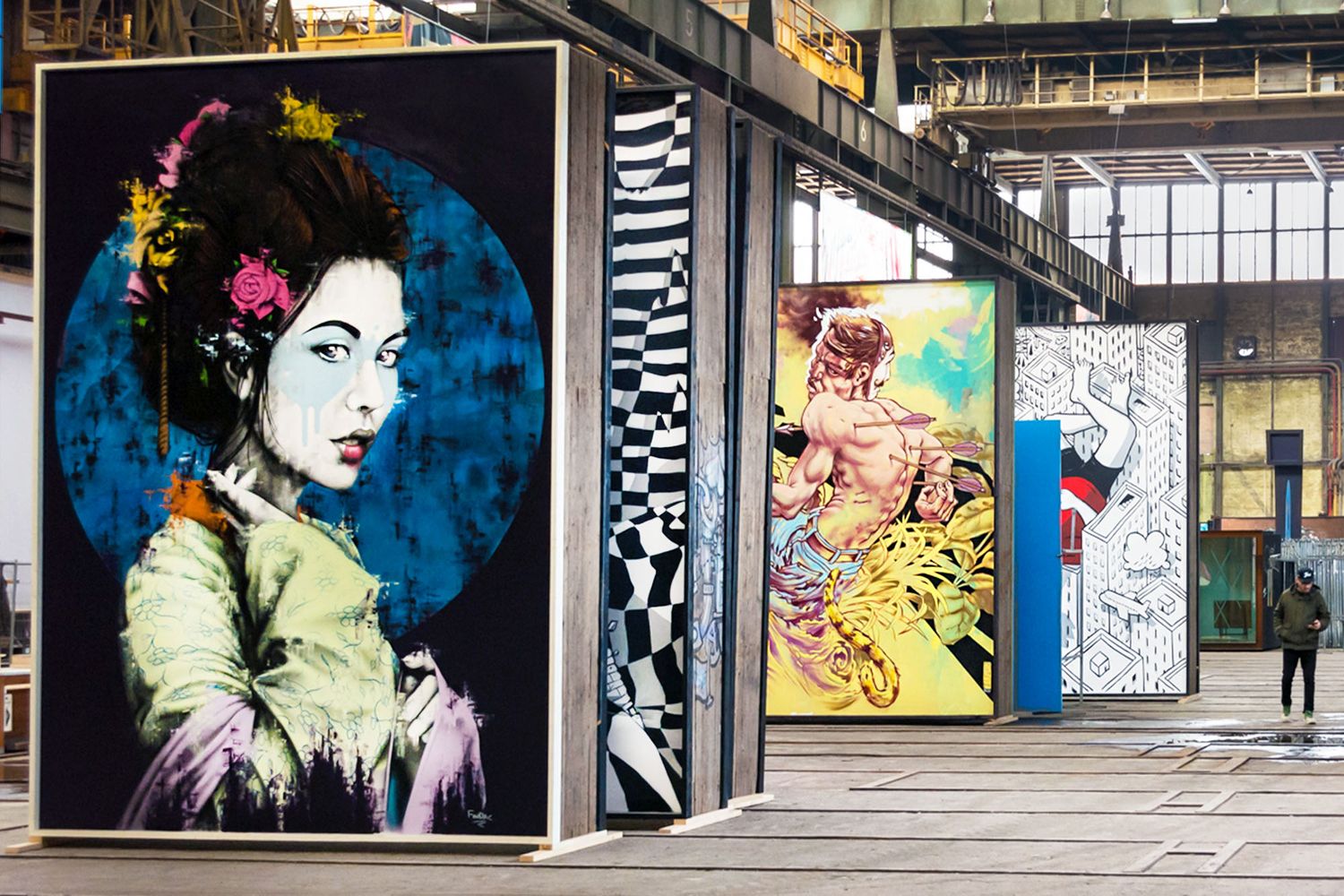
From the Street to the Museum: the journey of Urban Art
Giulia Blocal • Posted on August 22, 2022
The visual expression of Graffiti and Street Art has come a long way from its underground roots. After the success of street art exhibitions held at renowned museums worldwide, such as "Street Art'' at Tate Modern in London (2008), "Born in the Streets" at Fondation Cartier in Paris (2009) and "Art in the Streets" at MOCA in Los Angeles (2011), the Urban Art movement was ready to claim its own specialized museums and this has now been achieved through different initiatives around the world.
The overwhelming response to street art exhibitions shouldn't be surprising: on the one hand, there's the regular museum visitor who wants to learn about Street Art to understand the new language spoken in design, fashion, advertising and in the streets of their city. On the other hand, a new public that first engaged with art by stumbling upon street art murals in their everyday lives; people who would typically not go to the White Cube, while they expressly look for Street Art when they travel.
However, this growing audience that brings together two different worlds couldn't legitimate by itself the rise of street art museums, which sparked a heated debate: many feel that urban art museums, by attempting to "chain the dog", undermine an art form born illegally in public space. Do street art museums betray the rebellious spirit of the genre? It's interesting to see how Street Art and Graffiti museums have found ways to address this critical question, and -doing so- they challenged the old rules of the institutional art world with the straightforwardness that made this art form so popular in the streets.
SAM, the Street Art Museum in Saint Petersburg
The first-ever museum dedicated exclusively to Street Art is SAM: The Street Art Museum of Saint Petersburg. It opened its permanent exhibition space in 2014 inside the laminated plastic plant "Sloplast," which is still partially operating as an actual factory. However, the demand for this material used in the production of elevators, trains, escalators and kitchen countertops, has been decreasing in the latest years, hence the availability of several empty warehouses and boiler-rooms in the industrial zone which brought some ideas to its owner.
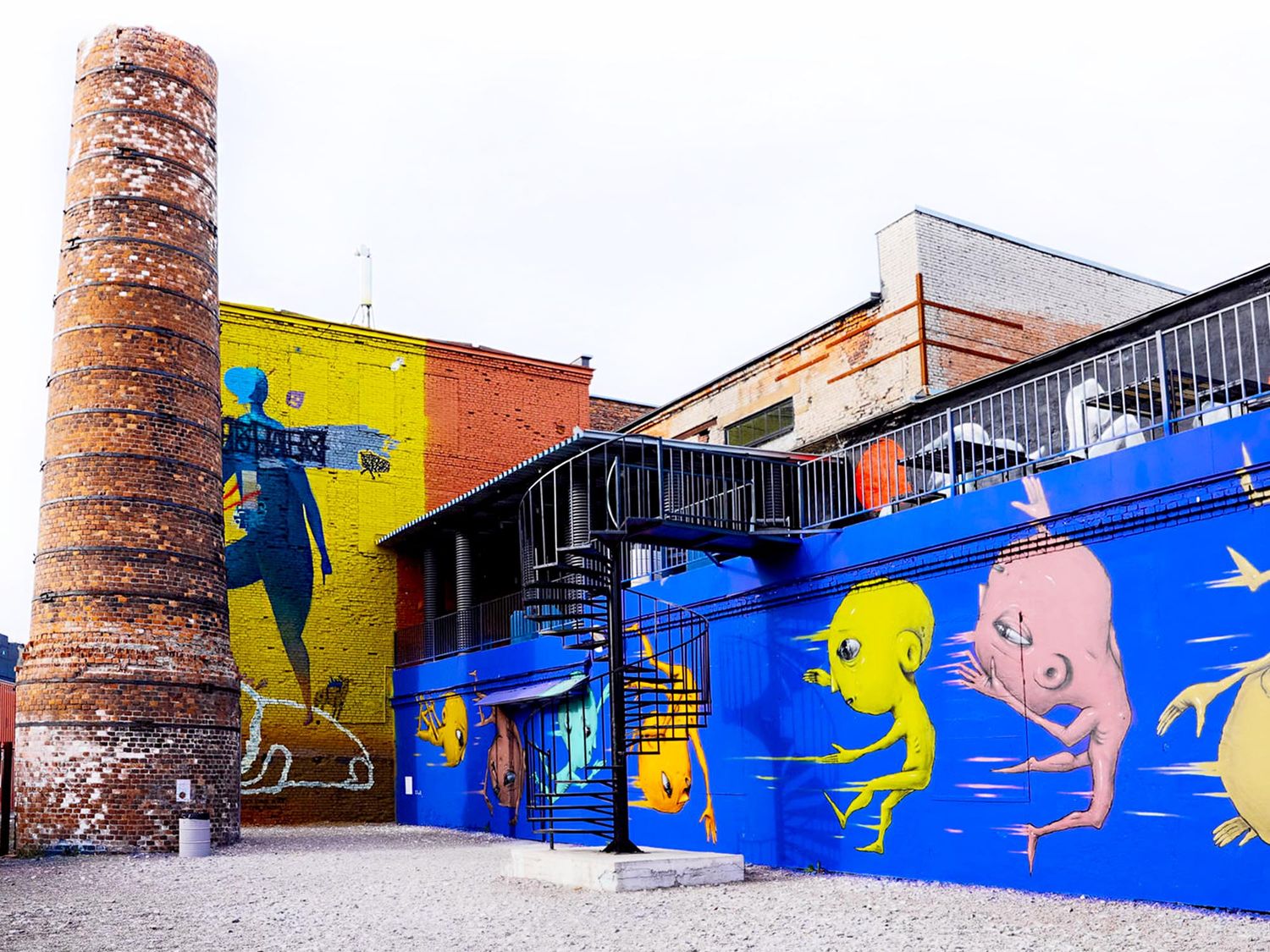
The Russian project began in 2012 when the Sloplast owner believed in Urban and Street Art to create a better environment for the company's workers and held a Graffiti party in one of the abandoned factory’s workshops. As the first institution facing the dilemma raised by the exhibition of Street Art inside closed spaces, the SAM solved it by inviting international street artists to paint large-scale murals on actual walls, thus allowing them to operate inside these 11 hectares industrial site as they would do in the streets. Today, the SAM is divided into two zones, with a permanent collection that includes around 50 murals done by Russian and international artists (Dima Rebus, Bordalo II, Millo, Slava Ptrk…) and a public space where temporary exhibitions are held and various events take place.
Discover more by visiting the website of the SAM
MUCA, the Museum of Urban and Contemporary Art in Munich
The need to imagine a new museum for a new art form led to the establishment of the MUCA Museum, the first of its kind in Germany, which opened its doors in 2016 in Munich. The Museum of Urban and Contemporary Art was the first contemporary art institution to include into its collection a vast majority of artworks from renowned and internationally acclaimed artists with an urban background (Banksy, Stohead, Obey, Swoon, Kaws, Herakut, L'Atlas…), what we commonly call now “Urban Contemporary Art”.
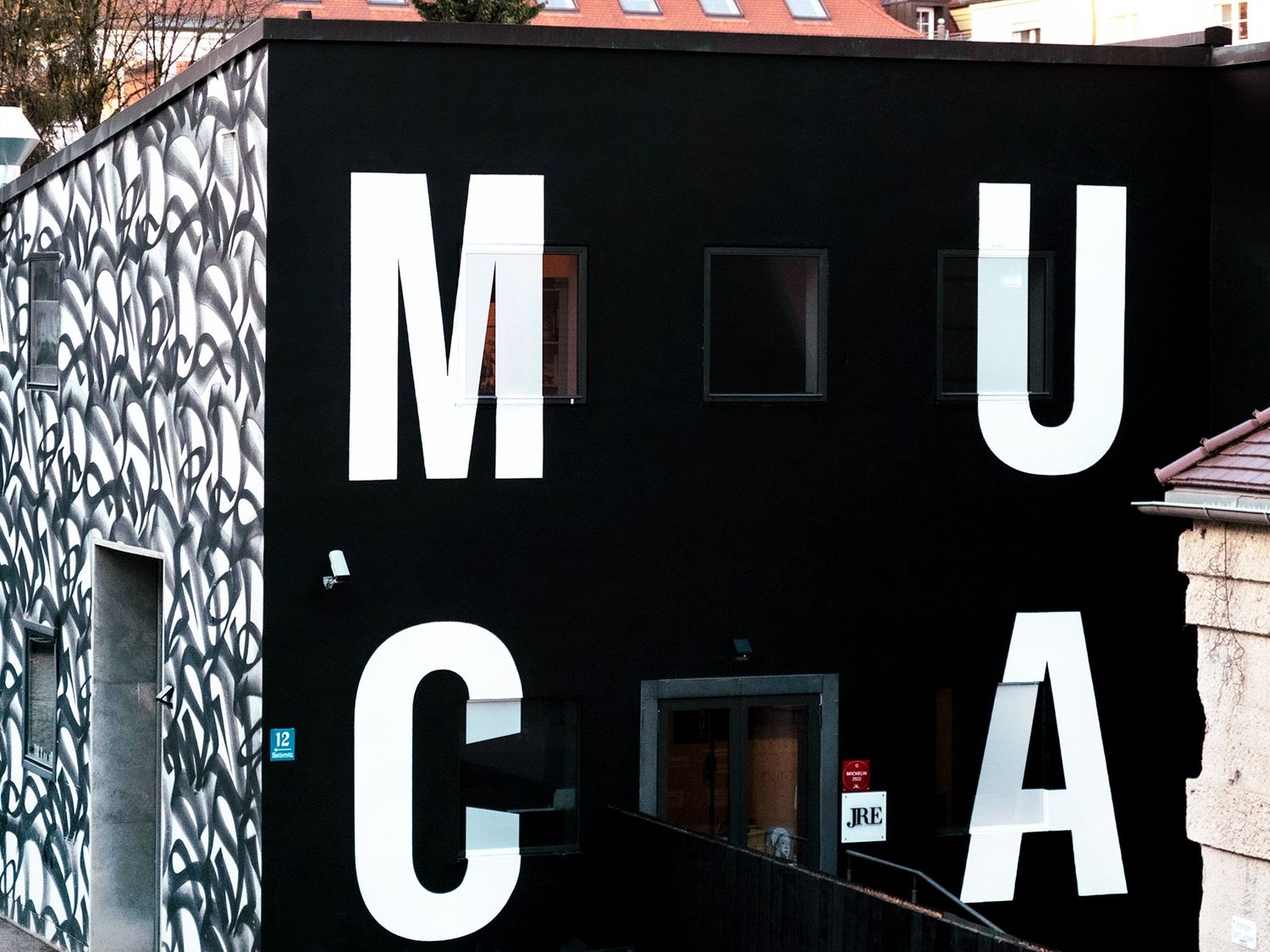
Since the beginning, the philosophy of MUCA has been to throw rigid ideas of the concept "museum" overboard and to operate as an open institution for Urban Art enthusiasts. For this reason and with the aim to introduce its audience to this new art form, the MUCA Museum organizes guided tours, presentations and open discussions because only through education and contextualization Street Art can be perceived as a true art form worthy of its own museums. Located in an area of 2’000 square meters in the Munich’s old town and in a building that was formerly used as a substation for the city's public utilities, the façade was painted by the renowned graffiti artist Stohead which enabled visitors to enter the exhibition spaces through a calligraphically designed approach.
Discover more by visiting the website of the MUCA
Urban Nation, the Museum for Urban Contemporary Art in Berlin
Urban Nation opened its doors in 2017 in the Berlin quarter of Schöneberg, a formerly blighted area which turned hip, gay-friendly neighborhood where the only tourists are those hunting the many street art murals. By being considered as the Graffiti and Street Art capital of Germany, it was no coincidence that the biggest Urban Art Museum of the country was established in Berlin.
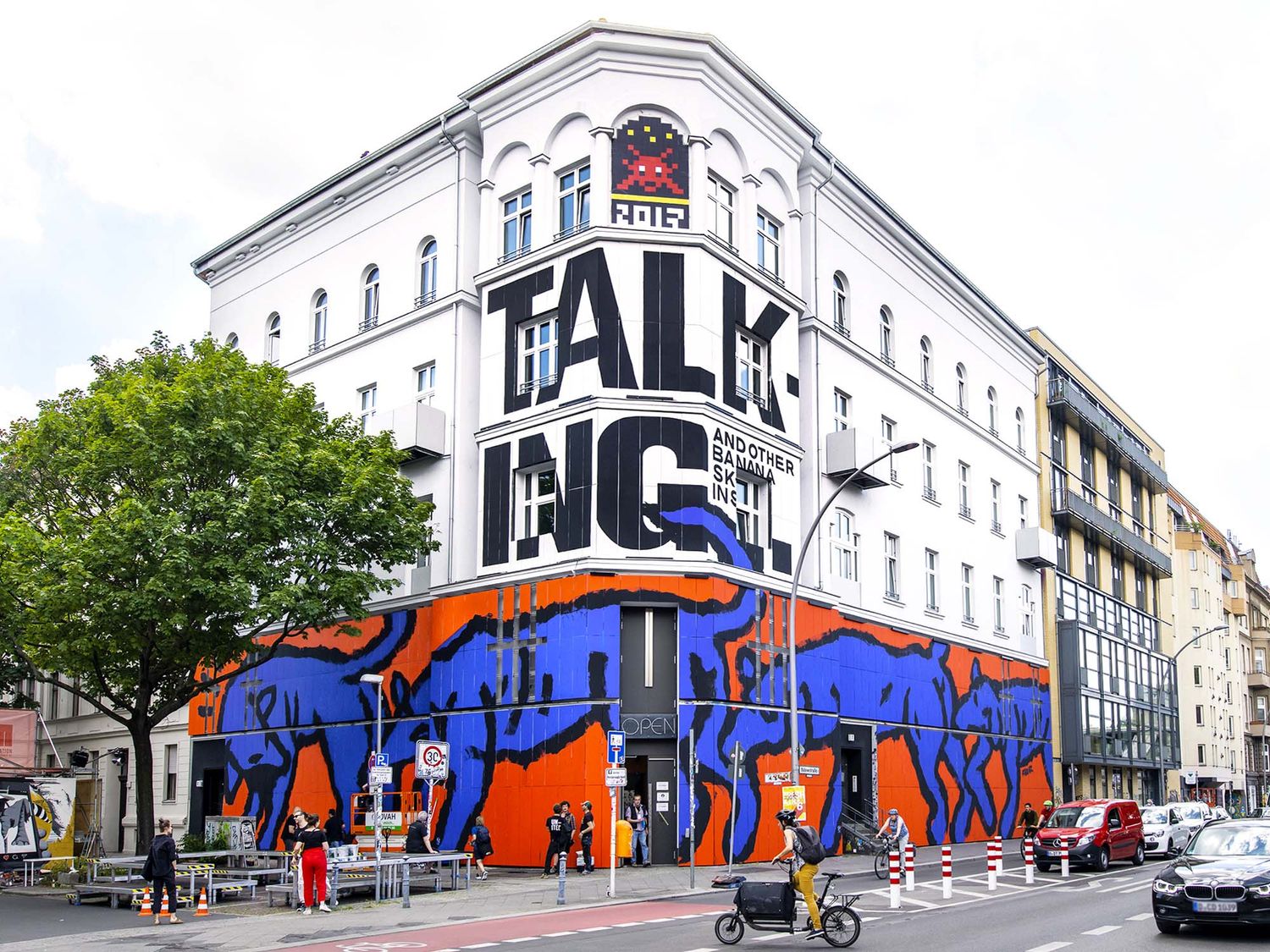
The Urban Nation Museum was born from the Urban Nation project which intended to promote creative exchanges between street artists and Berliners, and to support their participation through cultural education programs in Berlin’s neighborhoods. Since 2013, they have invited well-known street artists to embellish the walls of Berlin and make art in urban space tangible for everyone, including on the museum façade, which is repainted periodically. In addition to the museum, Urban Nation also hosts twelve apartments for urban artists within the residence program and a library with publications and archival materials donated by graffiti photographer Martha Cooper to document the history of the movement. With more than 100 urban artists and as many artworks created specifically for the museum (Seth, Invader, Jef Aérosol, Faith47, Icy and Sot, Nychos, Retna…), Urban Nation in Berlin made the impossible possible and is now recognized as one of the best of its kind.
Discover more by visiting the website of Urban Nation
MAUSA, the Museum of Urban Art and Street Art in Neuf-Brisach
MAUSA is an Urban Art project which started in 2017 in Les Forges de Baudin by turning an old country house of 22’000 square meters into a temporary Urban Art Museum. One year later, the MAUSA Museum of Urban Art and Street Art opened a second site inside the historic fortress of Neuf-Brisach built by Vauban, a 1’200 square meters UNESCO-listed site built in the early 18th century that brought a unique environment to exhibit Street Art.
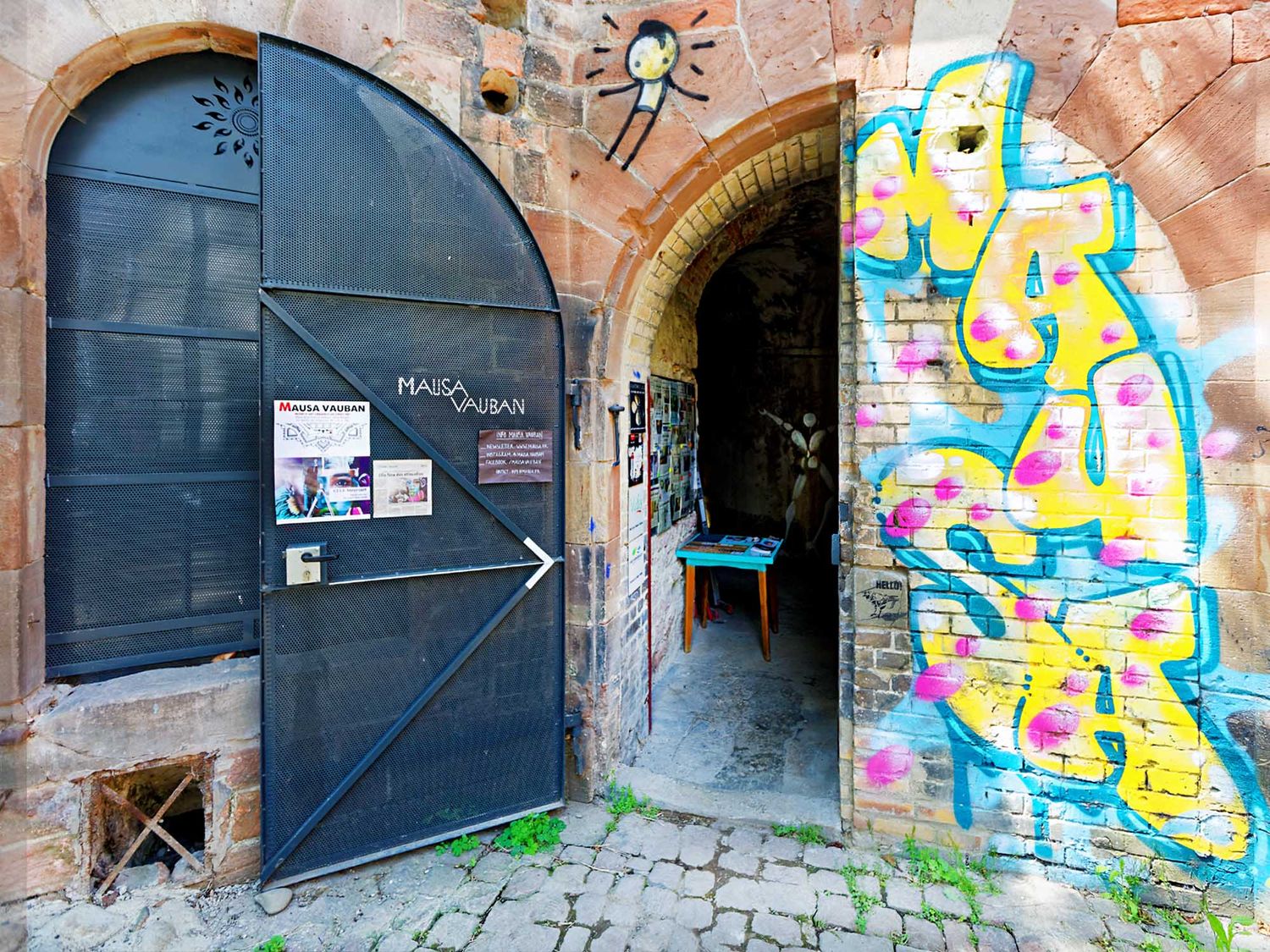
Since then, many internationally renowned urban artists followed one another to invest this atypical place and bring their contribution on the museum's walls in front of visitors, a true celebration of the inclusivity of this art form. Urban artists invited for an art residency, and street art lovers willing to deepen their knowledge on the artform have therefore replaced inhabitants in the fortified citadel, turning it into a place of creation and production. The initial concept of the museum was to dedicate a room for each artist and let them turn it into a unique experience for the visitor. One can find here beautiful works from BustArt, C215, Cren, Jérôme Mesnager, Levalet, Nasty, AkteOne… in a style as varied as the artists' origins. As a real living museum, it is also not uncommon to visit the museum and come across an artist perched on a ladder painting with a spray can!
Discover more by visiting the website of the MAUSA
Fluctuart, the first floating Urban Art Center in Paris
Opened in 2019 in the heart of Paris on the water of the Seine River, Fluctuart overturns the codes of classical museums in many ways. First of all with its architecture: by allowing the Seine's water to enter the heart of the building through a hole in the shell, thus symbolizing the paradox of a closed enclosure that exhibits works of art that belong to the street. Suggesting at the same time that the solution to the paradox might lie in erasing the boundaries between Urban Art and Contemporary Art, and also between cold museums and places where visitors usually have fun.
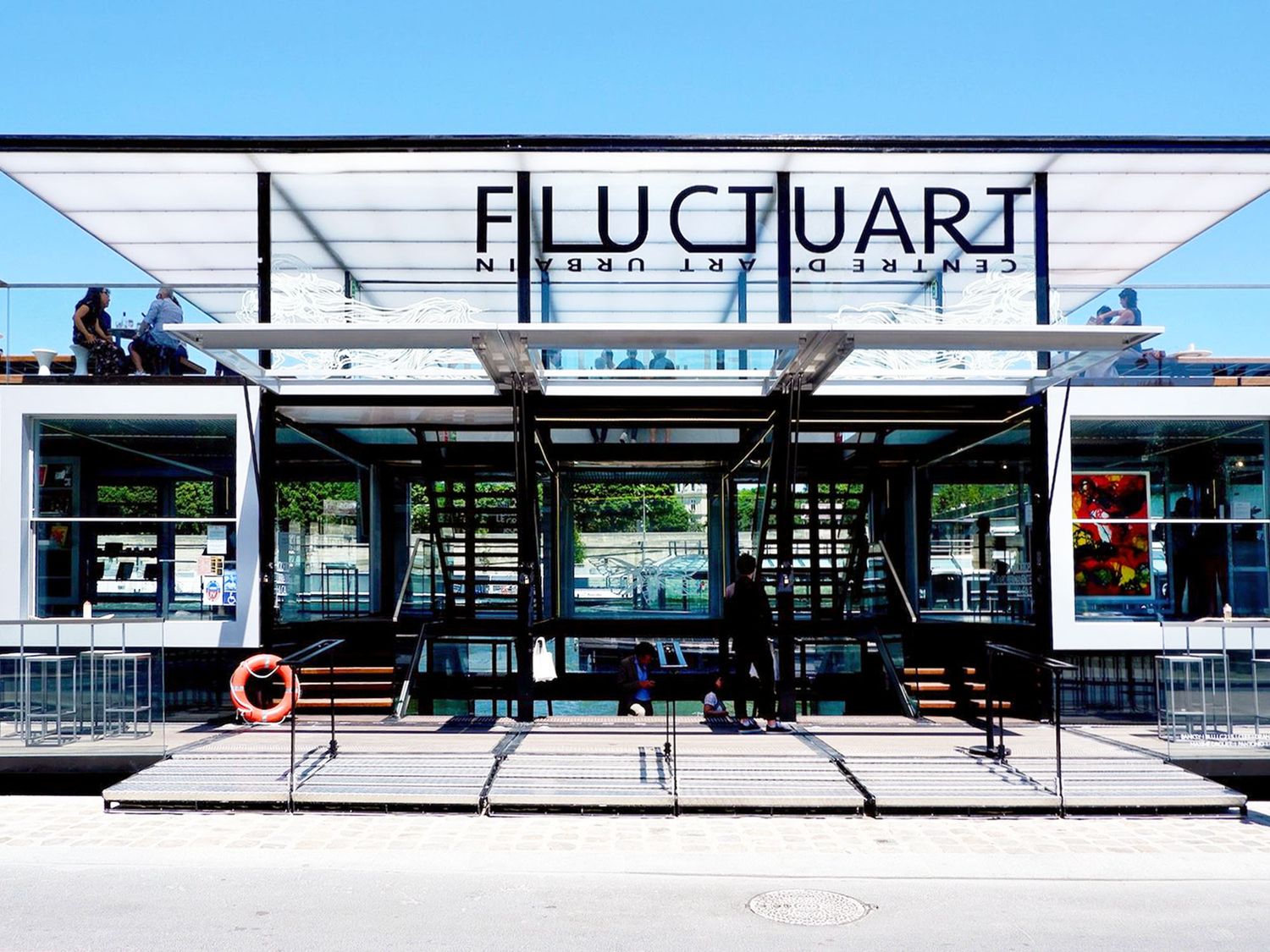
Indeed, Fluctuart is also a meeting place, a dynamic center open to all in the spirit of exchange, likewise the street. The center extends over a completely transparent surface of 1’000 square meters and with three levels where artworks from newcomers and pioneers like JonOne, JR, Clet Abraham, Vhils, Ërell, Amsted… are exhibited into transparent boxes, as well as a bookshop where magazines, books and limited editions can be found. Fluctuart also stays open until late at night when spectacular projections and video-mapping installations are made with some artworks onto the Seine quay, making the perfect backdrop for concerts, DJ-sets, parties, and other types of live events hosted within the two bars of its rooftop.
Discover more by visiting the website of Fluctuart
The Museum of Graffiti in Miami
Established in 2019, the Museum of Graffiti applies to Graffiti Art a traditional museum concept based on preservation and historical documentation of the evolution of an art form. It exhibits, educates and celebrates the thousands of graffiti artists in the world who have transformed walls from the streets into vibrant masterpieces. This very first institution entirely devoted to telling the history of Graffiti is located in Miami's district of Wynwood, a popular destination for Graffiti and Street Art. Formerly a dodgy area, Wynwood now welcomes artists from around the world who paint dozens of spectacular murals throughout the year, and more especially during the Miami Art Basel Week.
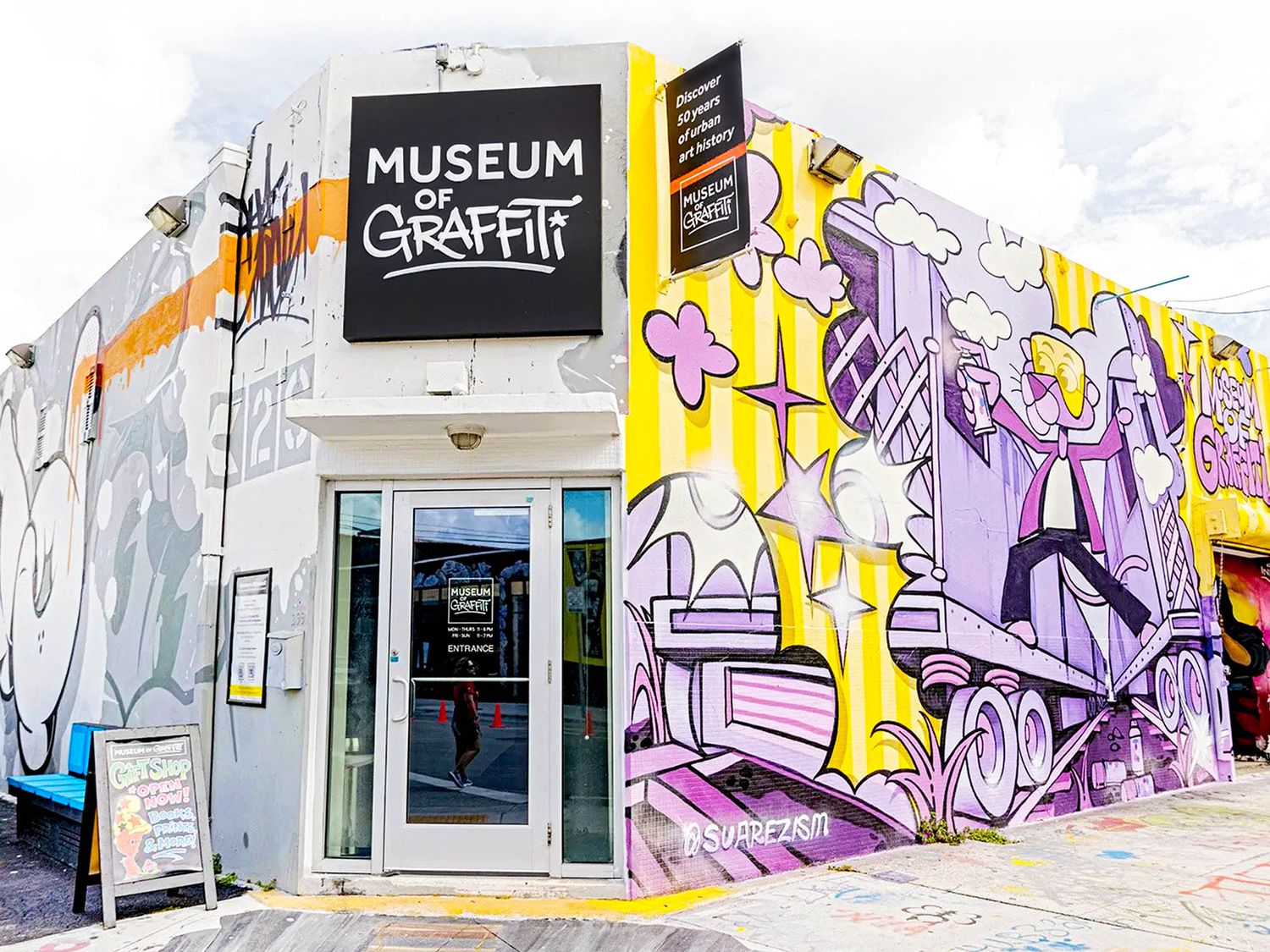
Founded by the veteran graffiti artist Alan Ket, the authenticity of the Museum of Graffiti is rooted in this graffiti lineage that allows the museum to present and celebrate the art form from an insider's point of view, along with the pride it takes in illustrating the movement's 50-year history through such relics as photographs of long-gone murals or vintage spray cans from famous artists. The Museum experience includes an indoor exhibition space with paintings, sculptures and drawings, twelve murals around the property, an art gallery where exhibitions from artists like Saber, Doze Green, Lady Pink, Ces, Blade, Shoe were held, and a gift shop with limited editions and exclusive items from the world’s most talented graffiti artists.
Discover more by visiting the website of the Museum of Graffiti
STRAAT, the Museum for Street Art and Graffiti in Amsterdam
Finally, it’s in 2020 that the STRAAT, the latest museum entirely dedicated to Street Art and Graffiti opened its doors at Amsterdam's NDSM wharf, formerly the largest shipyard in Europe. Artists and creative people of all kinds had colonized the site in the 2000s, eventually turning the NDSM district into a popular destination for Graffiti and Street Art lovers. But the landmark of the area, a majestic warehouse of 8’000 square meters is now home to canvases as large as actual outdoor murals painted by street artists and graffiti writers from the five continents.
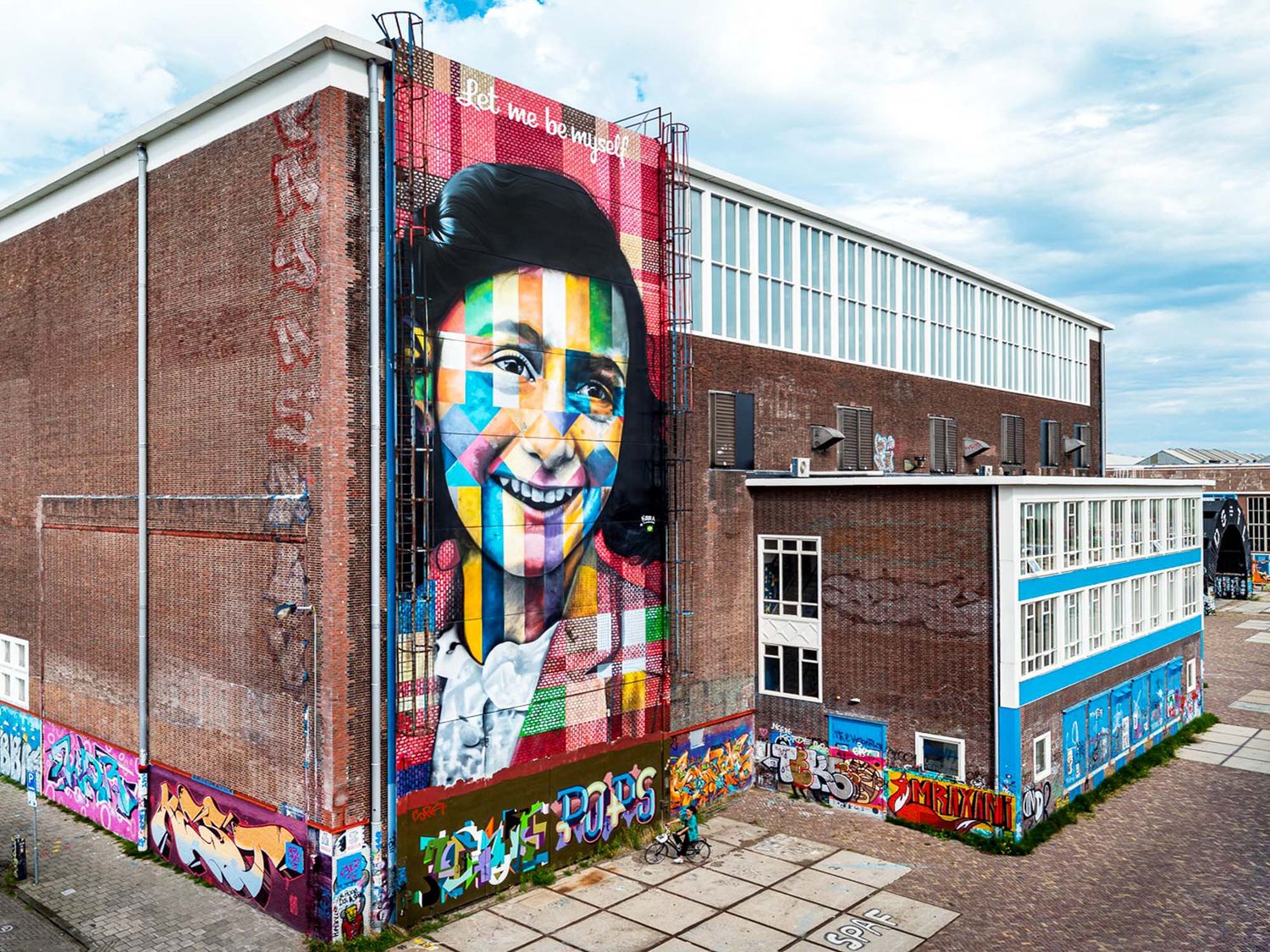
Through an in-depth contextualization of the movement and a raw environment, STRAAT illustrates the complexity of this art form and addresses the public's misconceptions about Graffiti and Street Art, pointing out that urban art is a legit art form that deserves its place in art history and in the art world. With more than 150 artworks that were created on-site by more than 130 artists (Cranio, Tristan Eaton, Kobra, Findac, Rafael Sliks, A Squid called Sebastian…), the museum offers a unique experience to experiment Graffiti and Street Art and reunites under the same roof the variety of styles, shapes, techniques and narratives of the largest art movement of our times. By being the “world’s largest Street Art Museum” and the best Museum of The Netherlands in 2021, STRAAT is for sure a must see for all urban art enthusiasts!
Discover more by visiting the website of STRAAT
Groundbreaking as the movement they represent, Graffiti and Street Art museums have introduced new ways of experiencing this form of art. They have transcended traditional notions of what belongs in a museum, designing alternative places that highlight the inclusive understanding of culture that Graffiti and Street Art champion.
Since its origin, the Graffiti movement has therefore pushed the boundaries of art, or at least how art museums have been used to categorize art production and artistic merit. But the push towards an art world with no boundaries doesn’t end with the birth of their own museums, after expanding off the streets, Graffiti and Street Art have started to conquer art lovers around the world thanks to online art sales that are also shaking up the art world and helping artists to make a living of their art.